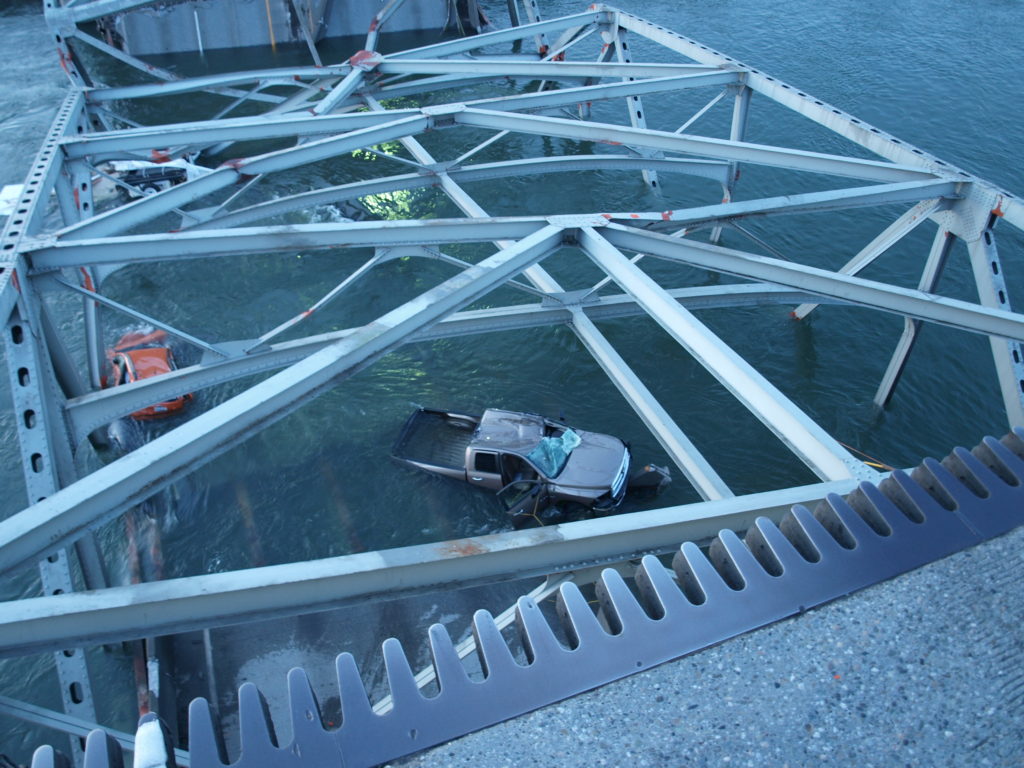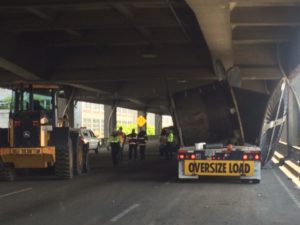Train traffic near Lacey, Washington was stopped for several hours on Tuesday after a semi-truck crashed into a train trestle .
Last month, a dump truck weighing approximately 15,000 pounds vehicle collapsed an “old, rickety bridge” in Snohomish County.
Neither of those crashes should have happened. More and more often, I am seeing these reports of trucks crashing into underpasses, overpasses, trestles or bridges.
Each one of these instances is preventable and under no circumstance should such a crash occur. Here’s why.
Commercial Truck Route Planning
Besides operating a heavy truck safely on our public highways, a commercial motor vehicle (CMV) driver is required to know and understand all aspects of their route.
This is known as route planning: truck drivers and motor carriers are supposed to review the planned route, and consider any potential dangers.
Commercial truck drivers are required to review their planned routes to check heights and clearances.
“Hope” is not a plan.
The safe operation of a semi-truck and its load is not complicated, especially with the tools available on the Internet. On major highways in Washington State, the Department of Transportation provides the heights and clearances of all major bridges and overpasses. While this tool doesn’t cover every single potential danger a truck driver may encounter, CMV drivers are supposed to review their route prior to beginning travel – consider all aspects of the route, including underpasses, bridges and trestles.
If in doubt, no risk or chance of crashing into one of these structures should be taken. Hope is not a plan.
Route Planning Failure Caused Bridge Collapse
This incident fortunately did not result in any injuries or damages that took the trestle out of operations, but, that was simply by luck.
My client, Bryce, was not so lucky. Several years ago, he was driving across the Skagit River Bridge when it simply fell out from under his vehicle.
That bridge collapse occurred because a truck driver had failed to consider his route and his oversize load. As he was passing under the bridge his load hit a “through-truss” causing a catastrophic failure of the bridge.

A deposition (a recorded statement under oath, conducted by a lawyer – in this case, me) established a complete failure by the truck driver to consider his truck route and the dangers associated with his load.
A simple review of the bridge dimensions would have established that the driver’s load would not safely pass under the bridges “through-trusses” in the lane of travel he was operating at the time of his crossing. Many other safe route options were available to the truck driver.
In that situation, the truck driver and motor carrier’s failure to engage in the required truck route planning put innocent people at extremely high-risk, and resulted in preventable injuries and damages.

If you fail to plan an alternate route to work, you might get lost, or stuck in traffic. But when a semi-truck driver hauling a heavy trailer slams into a bridge, people get hurt.
Proper route planning helps truckers avoid disaster.


